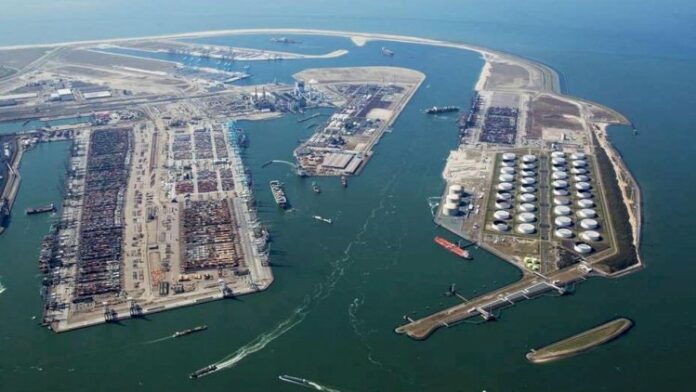Maud Eijgendaal and Marc de Vries of the Port of Rotterdam Authority developed the new innovative application.
Bunkering is the supply of fuel to vessels. Bunker specialists in the port of Rotterdam are obliged to notify the Port Authority and Customs prior to commencing each bunkering operation. These are practically the same notifications that currently still need to be made separately. This could be done smarter.
Maud Eijgendaal, Bunkering, LNG and Cruise Business Manager, said:
‘Bunkering is one of the most important maritime services in the port, and globally we are in the top 3. Annually, sea-going vessels ‘fill up’ around 20,000 times. In total, these vessels bunker around 10 million tonnes of fuel, with a total value of several billions of euros. It is important that the entire bunkering process runs as safely and efficiently as possible. But, in the bunkering market, many transactions still take place by telephone or paper. That takes an unnecessarily big amount of time and doesn’t always result in a reliable overview of bunkering activities. We developed the app because things can and must be done differently.’
The digital TimeToBunker tool is the first step towards fully paperless bunkering. Submitting electronic notifications is much more efficient than the current working method and results in a more reliable overview of planned bunkering activities. Information can also be shared more easily, and the application also allows the notification to be submitted to both the Harbour Master and Customs (optional) simultaneously. Maud Eijgendaal added:
‘The app makes everything more efficient. Not only for our customers, who report the bunkering activities electronically via the app, but also for us. Registering 20,000 notifications is a lot of work and with manual entry, things sometimes go wrong, resulting in unreliable information. Particularly now, with the energy transition and transfer to increasingly cleaner fuels, it’s crucial that we have a reliable overview of all fuels being bunkered in the port; both the traditional fuels and the cleaner fuels such as LNG and biofuel. Without this overview it’s difficult to monitor trends and make and anticipate predictions. The new app gives us this overview.’
TimeToBunker is linked to PRONTO, the app that shipping companies, agents, terminals and other service providers use to optimise planning, execution and monitoring of all activities during a port call. Marc de Vries:
‘This overview of planned bunkering activities will enable vessel clearance to be optimised yet further. On average, 80% of all sea-going vessels bunker fuel, and this can take several hours. It is extremely important that the vessel voyage and the bunkering activities connect seamlessly. TimeToBunker supports this.’
TimeToBunker was launched in March 2019, and within a few weeks 1,000 bunkering activities had already been registered via the app. Approximately 50% of the market currently uses the app. The app’s further development is in full flow. Maud Eijgendaal:
‘We’re doing this by showing the advantages of the app to as many parties as possible, and getting them enthusiastic about it. Digital notification will be compulsory from next year. The next step is generating the electronic bunker delivery note of the bunkered fuel, which must contain certain data about the supplied fuel and can be viewed as a value document. We are already holding discussions with several parties about this, and interest is high.’



